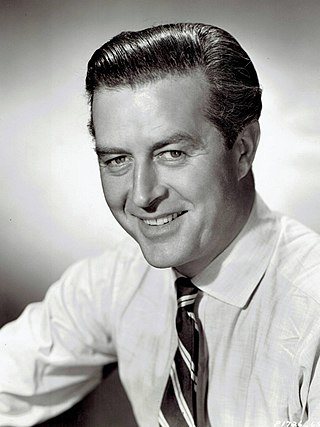
Ray Milland was a Welsh-American actor and film director. He is often remembered for his portrayal of an alcoholic writer in Billy Wilder's The Lost Weekend (1945), which won him Best Actor at Cannes, a Golden Globe Award, and ultimately an Academy Award—the first such accolades for any Welsh actor.
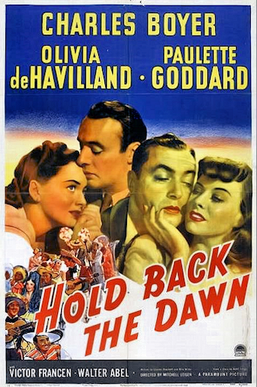
Hold Back the Dawn is a 1941 American romantic drama film directed by Mitchell Leisen, in which a Romanian gigolo marries an American woman in Mexico in order to gain entry to the United States, but winds up falling in love with her. It stars Charles Boyer, Olivia de Havilland, Paulette Goddard, Victor Francen, Walter Abel, Curt Bois, Rosemary DeCamp, and an uncredited Veronica Lake.

Bowen Charlton "Sonny" Tufts III was an American stage, film, and television actor. He is best known for the films he made as a contract star at Paramount in the 1940s, including So Proudly We Hail!. He also starred in the cult classic Cat-Women of the Moon.
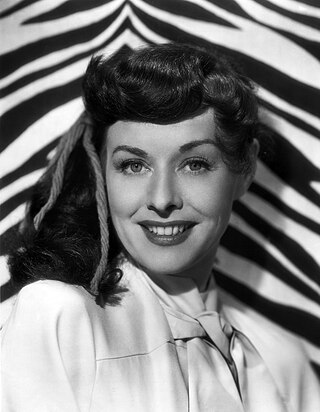
Paulette Goddard was an American actress and socialite. Her career spanned six decades, from the 1920s to the early 1970s. She was a prominent leading actress during the Golden Age of Hollywood.

Ida Lupino was a British actress, director, writer, and producer. Throughout her 48-year career, she appeared in 59 films and directed eight, working primarily in the United States, where she became a citizen in 1948. She is widely regarded as the most prominent female filmmaker working in the 1950s during the Hollywood studio system. With her independent production company, she co-wrote and co-produced several social-message films and became the first woman to direct a film noir, The Hitch-Hiker, in 1953.

Edward Macdonald Carey was an American actor, best known for his role as the patriarch Dr. Tom Horton on NBC's soap opera Days of Our Lives. For almost three decades, he was the show's central cast member.
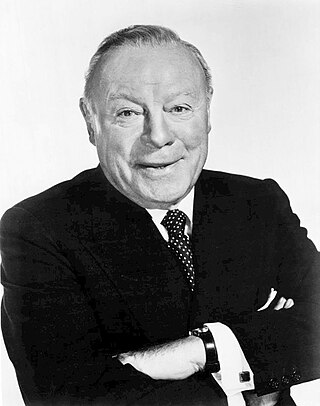
Edmund Gwenn was an English actor. On film, he is best remembered for his role as Kris Kringle in the Christmas film Miracle on 34th Street (1947), for which he won the Academy Award for Best Supporting Actor and the corresponding Golden Globe Award. He received a second Golden Globe and another Academy Award nomination for the comedy film Mister 880 (1950). He is also remembered for his appearances in four films directed by Alfred Hitchcock.
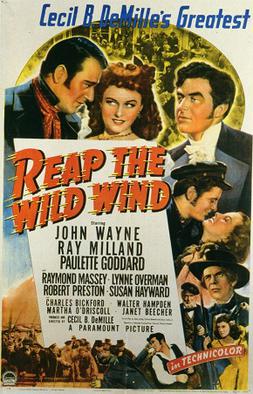
Reap the Wild Wind is a 1942 American adventure film produced and directed by Cecil B. DeMille and starring Ray Milland, John Wayne, and Paulette Goddard, with a supporting cast featuring Raymond Massey, Robert Preston, Lynne Overman, Susan Hayward and Charles Bickford. DeMille's second Technicolor production, the film is based on a serialized story written by Thelma Strabel in 1940 for The Saturday Evening Post. The screenplay was written by Alan Le May, Charles Bennett, Jesse Lasky, Jr. and Jeanie MacPherson.

Constance Collier was an English stage and film actress and acting coach. She wrote plays and films with Ivor Novello and she was the first person to be treated with insulin in Europe.

Patric Knowles, born Reginald Lawrence Knowles, was an English film actor. Born in Horsforth, West Riding of Yorkshire, he later changed his name to reflect his Irish heritage. He made his film debut in 1932, and played either first or second film leads throughout his career. He appeared in films from the 1930s to the 1970s.

Variety Girl is a 1947 American musical comedy film directed by George Marshall and starring Mary Hatcher, Olga San Juan, DeForest Kelley, Frank Ferguson, Glenn Tryon, Nella Walker, Torben Meyer, Jack Norton, and William Demarest. It was produced by Paramount Pictures. Numerous Paramount contract players and directors make cameos or perform songs, with particularly large amounts of screen time featuring Bing Crosby and Bob Hope. Among many others, the studio contract players include Gary Cooper, Alan Ladd, Paulette Goddard, Ray Milland, William Holden, Burt Lancaster, Robert Preston, Veronica Lake, William Bendix, Barbara Stanwyck and Paula Raymond.

Cecil Lauriston Kellaway was a South African character actor. He was nominated for the Academy Award for Best Supporting Actor twice, for The Luck of the Irish (1948) and Guess Who's Coming to Dinner (1967).
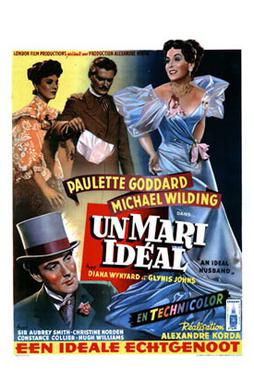
An Ideal Husband, also known as Oscar Wilde's An Ideal Husband, is a 1947 British comedy film adaptation of the 1895 play by Oscar Wilde. It was made by London Film Productions and distributed by British Lion Films (UK) and Twentieth Century-Fox Film Corporation (USA). It was produced and directed by Alexander Korda from a screenplay by Lajos Bíró from Wilde's play. The music score was by Arthur Benjamin, the cinematography by Georges Périnal, the editing by Oswald Hafenrichter and the costume design by Cecil Beaton. This was Korda's last completed film as a director, although he continued producing films into the next decade.

Star Spangled Rhythm is a 1942 American all-star cast musical film made by Paramount Pictures during World War II as a morale booster. Many of the Hollywood studios produced such films during the war, with the intent of entertaining the troops overseas and civilians back home and to encourage fundraising – as well as to show the studios' patriotism. This film was also the first released by Paramount to be shown for 8 weeks.

Practically Yours is a 1944 American romantic comedy film directed by Mitchell Leisen and starring Claudette Colbert and Fred MacMurray and Cecil Kellaway. Written by Norman Krasna, it was produced and distributed by Paramount Pictures.

Theodore Nikolai Lukits was a Romanian American portrait and landscape painter. His initial fame came from his portraits of glamorous actresses of the silent film era, but since his death, his Asian-inspired works, figures drawn from Hispanic California and pastel landscapes have received greater attention.
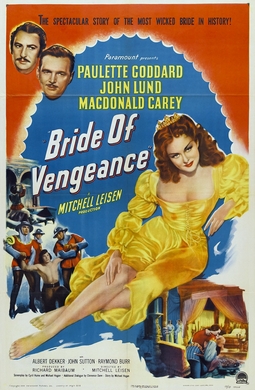
Bride of Vengeance is a 1949 American historical drama film directed by Mitchell Leisen and starring Paulette Goddard, John Lund and Macdonald Carey. Produced and distributed by Paramount Pictures, it is set in the Italian Renaissance era. Ray Milland was originally cast in the film but refused the assignment, leading the studio to suspend him for ten weeks.

The Crystal Ball is a 1943 film directed by Elliott Nugent and starring Ray Milland and Paulette Goddard.
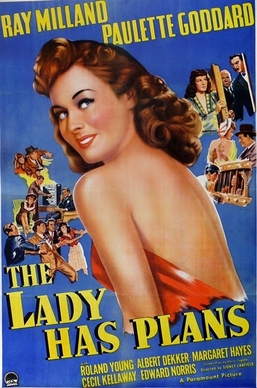
The Lady Has Plans is a 1942 American comedy film spy thriller film directed by Sidney Lanfield and starring Ray Milland, Paulette Goddard and Roland Young. It was produced ad distributed by Paramount Pictures as a World War II espionage film set in neutral Portugal.

Are Husbands Necessary? is a 1942 American comedy film directed by Norman Taurog and starring Ray Milland and Betty Field. It follows the misadventures of a wacky wife and her sometimes exasperated, but loving, banker husband. The film's screenplay was adapted by the husband-and-wife writing team of Tess Slesinger and Frank Davis, from the novel Mr. and Mrs. Cugat, the Record of a Happy Marriage by Isabel Scott Rorick. This novel would later be a source for the related 1948 radio series My Favorite Husband starring Lucille Ball, which itself would evolve into the television series I Love Lucy.





















